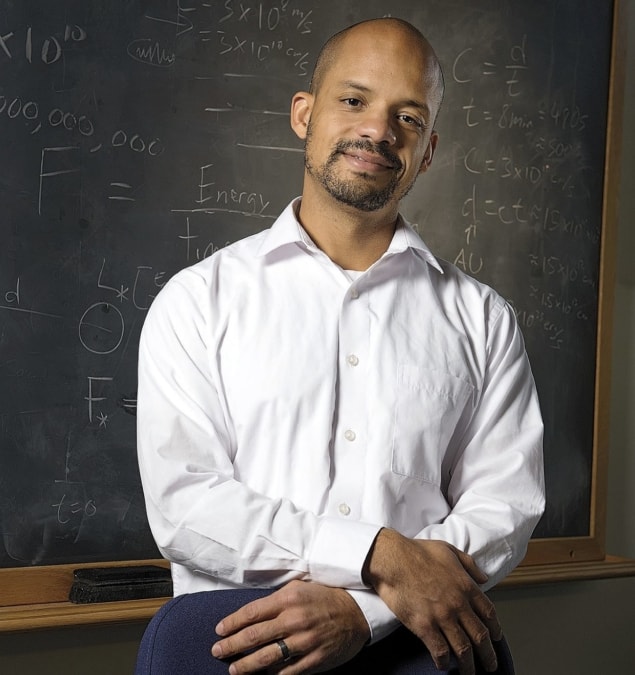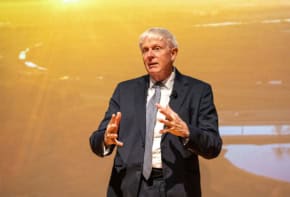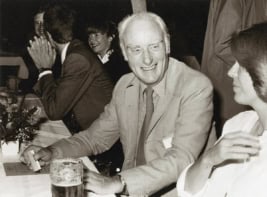This article is the second in a series of essays written by Black physicists and co-published with Physics Today as part of #BlackInPhysics Week 2022, an event dedicated to celebrating Black physicists and their contributions to the scientific community, and to revealing a more complete picture of what a physicist looks like. This year’s theme is “Joy in the diverse black community”.

While in graduate school, I put a chart on my wall showing the number of astrophysics PhDs per year in the US awarded to Black scientists. The numbers were so small – only about 10 – that I was able to identify and attach a name to each datum: Dara Norman, Gibor Basri, Jarita Holbrook, Neil deGrasse Tyson.
In subsequent years I found opportunities to meet most of them, and when I earned my PhD, I added my data point to the chart. As I climbed the academic ladder on my way to joining the Harvard faculty, I set a goal of attaining a professorship and leveraging my position to increase the number of Black astronomers by supporting younger scholars as they navigated academia.
In the past decade, there has been a marked increase in the number of Black people receiving PhDs in astronomy. Four have graduated from Harvard in the past two years alone, representing a fourfold increase over the number in all the years prior. (Leonard Strachan was the first, in 1990.) Sadly, however, retention at all levels post-PhD has remained low, resulting in little to no net gain in the field as other scientists have retired. There were on the order of 10 of us at the principal-investigator level while I was a student, and there remain only about 10 of us now.
My conversations with younger Black astronomers have revealed some common themes, and a notable one is a lack of joy necessary to sustain a human in such a challenging job. While stories and experiences vary widely, there are many reports of high levels of stress, frustration and disappointment. Over the years I’ve come to the view that the problems are systemically rooted in the structure of academia and the broader society in which it is situated. The solution for me has been finding and maintaining alignment between my personal values and the stated values of my institution.
What it takes to find joy
For most of my life, I implicitly considered emotions as mysterious and stochastic. The “good” ones like happiness, excitement and satisfaction were to be sought out, and the “bad” ones such as sadness were suppressed, avoided or treated. The culture of science has similar themes. For example, good scientists are supposed to be dispassionate observers of the world, devoid of messy emotions.
Recently, I’ve adopted a different framework. I now see my feelings as indicators of whether my needs as a human are being met. Along with basic requirements such as food, water and shelter, there are higher-level needs such as agency, autonomy and connection to a loving and supportive community. Agency speaks to our ability to impact the world around us, and autonomy relates to our ability to make decisions about how to direct our efforts. Both speak to the human need for freedom. If given a choice, most people would choose a job that directly connects their labour to the improvement of the well-being of the people in their community, with maximum leeway regarding how they work toward their goals.
On the other hand, if our efforts are directed primarily by outside forces, and if there aren’t clear links between our work and our communities, then joy will tend to be in short supply. Although the resulting emotional responses, such as frustration and even despair, can be difficult to experience, I don’t believe they are negative, per se. Rather, they are indicators of the problems we are facing. Joy is the emotional state awaiting us when we find solutions.
Thus, in this framework, the lack of joy experienced by Black folks in physics – myself included at various points in my career – is a strong indication that our needs are going unmet on the job, where we spend most of our lives. To understand why, I believe we need to consider the institutions at which we work.
Navigating the realities of academia
Institutions are concerned primarily with their own preservation. That observation is simultaneously unintuitive and obvious upon inspection. It’s unintuitive because it’s rarely observed or discussed, and it’s certainly not encapsulated in mission statements and other means by which institutions speak of themselves. But it becomes obvious when you consider that no university, agency, department or corporation looks to a future of insolvency or dissolution. One of the ways universities and other institutions maintain their existence is to align themselves with the power structures in broader society. As a result, the priorities of institutions tend to be conservative – they are resistant to changes that would threaten their continued access to power and resources.
What is that status quo? In my view, it is defined by the existence of a rigid hierarchy; an inequitable distribution of power and resources concentrated at the top; an artificial scarcity of resources for most people; and a paucity of democratic processes for decision making. This is a systemic feature, and the resulting culture exists largely irrespective of the values of the people in charge. The result is a divergence between our humanity and the implicit values of our institutions. Scarcity of resources inspires competition and secrecy rather than collaboration and sharing. Metrics of evaluation for hiring and promotion are often vague, leading to stress and overwork. And the combination of stress, job insecurity, and minimal accountability and democracy often leads to toxic work environments.
A subtle yet specific example that has impacted me throughout my career is the surprisingly low value placed on teaching and learning at universities. As with many young people, my pursuit of a career in academic science was motivated by the desire to connect with others through teaching, mentoring and outreach. However, the farther I progressed in my academic career, the more I sensed my path diverging from teaching. I was directed by outside forces to focus on my research if I was seeking the best jobs at the top universities. As an older colleague once told me, “Anyone can teach, but scientific excellence is rare.”
Why would institutions of higher learning consistently disincentivize teaching? The short answer is that research directly and indirectly contributes to institutional revenue streams.
All of this has led me to conclude that I should not look to my job, nor to the institution in which it is situated, to meet many of my needs. It is up to me to seize my freedom and exercise it to get my needs met. In recent years I have decided to focus more on teaching and mentoring rather than running a large research enterprise. I structure my classroom to more closely mirror the structure I would like to see in the world around me. I give my students agency in choosing the topics we’ll study. Students work collaboratively in groups while I use my experience with the material to guide them to solutions. We challenge ourselves to assess our learning by explaining concepts to one another, rather than relying on high-stakes quizzes and exams.

Joy in cultural and community connections
I’ve also supported Black and brown students as part of the Banneker Institute summer programme, where I’ve set the goal of ensuring that students enter academia with their eyes open to the challenges facing them. In addition to working on research projects with scientists at the Center for Astrophysics|Harvard & Smithsonian, students have opportunities to build a lasting community that will support them in their journey through graduate school and beyond.
My students and I get to experience agency, autonomy and connection within a community of learners. In a sense, I’ve created a bubble in which institutional imperatives are held at bay while my human needs are more readily met. I’ve done this by finding and maintaining alignment between my personal values and the stated values of my institution, as well as a balance between my work life and my personal life. In short, I have found my way back to a state of joy within my profession.



